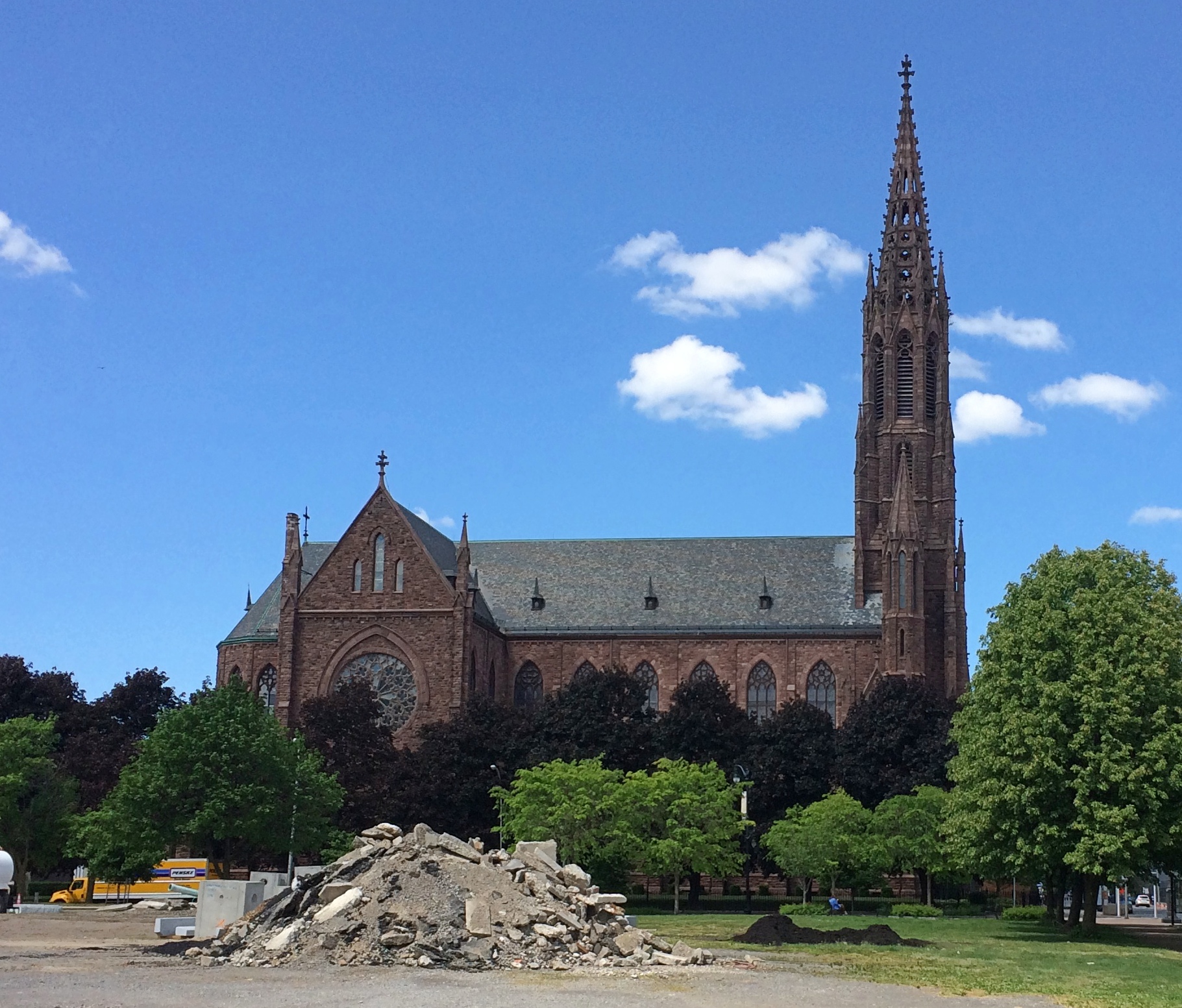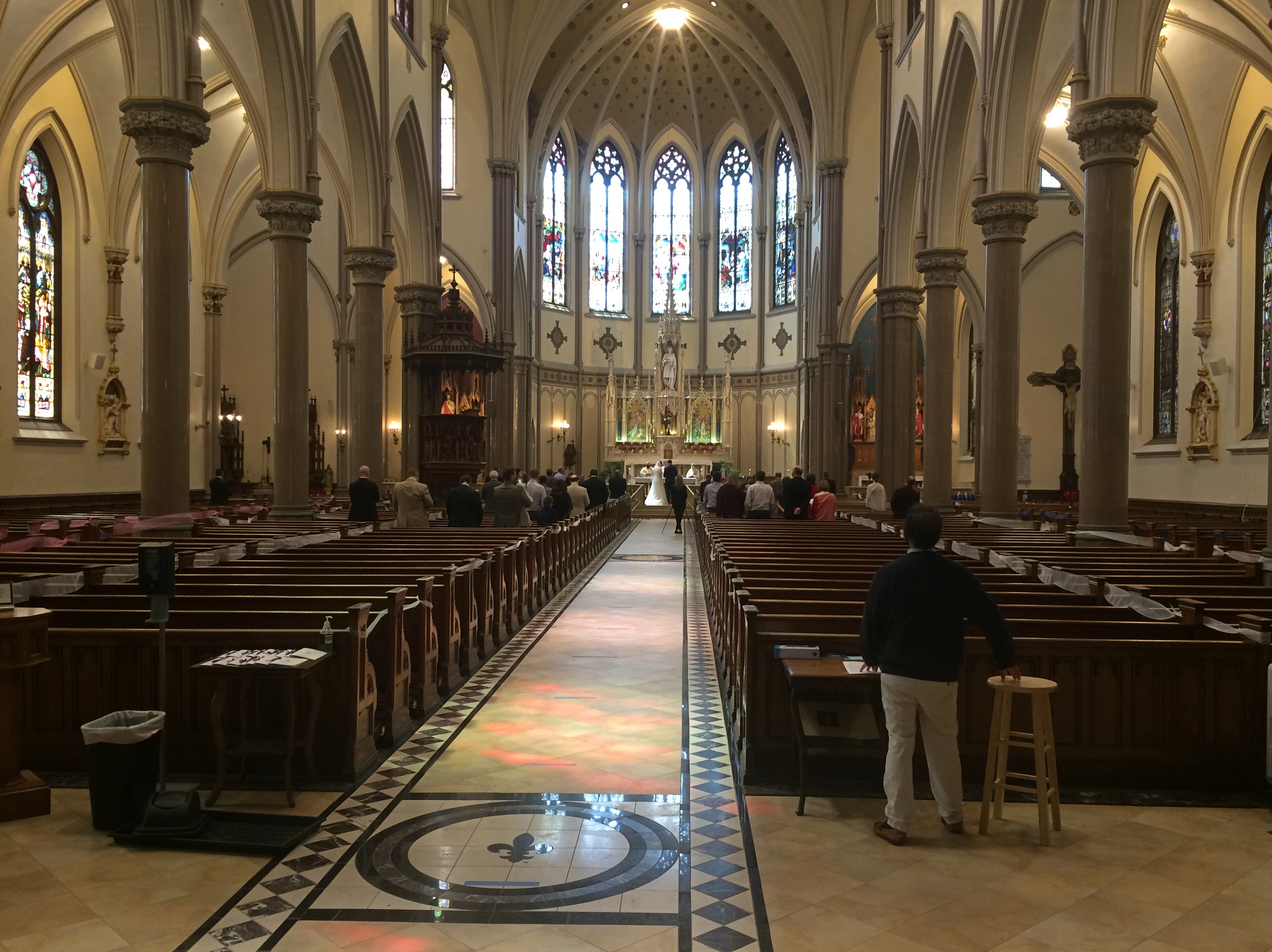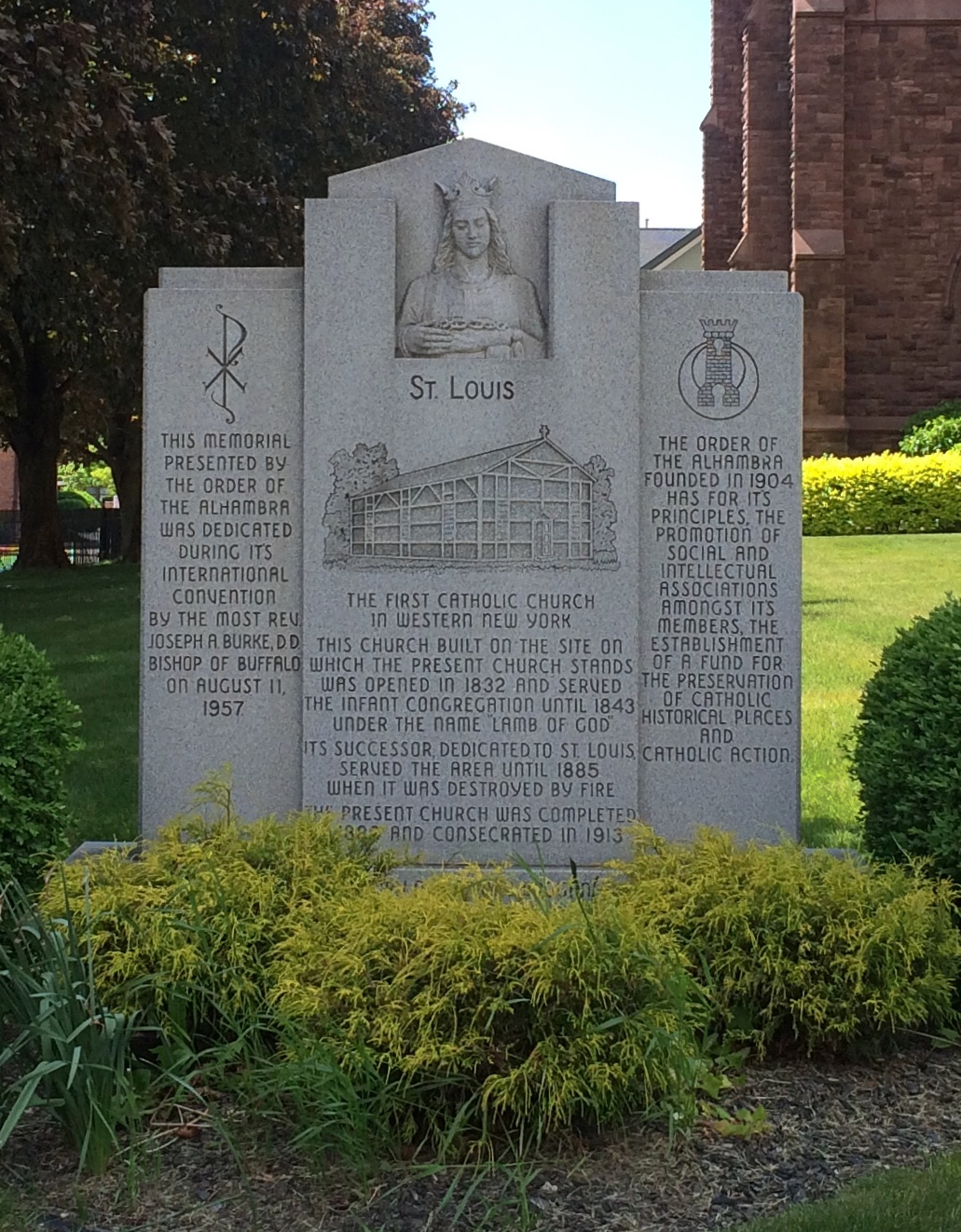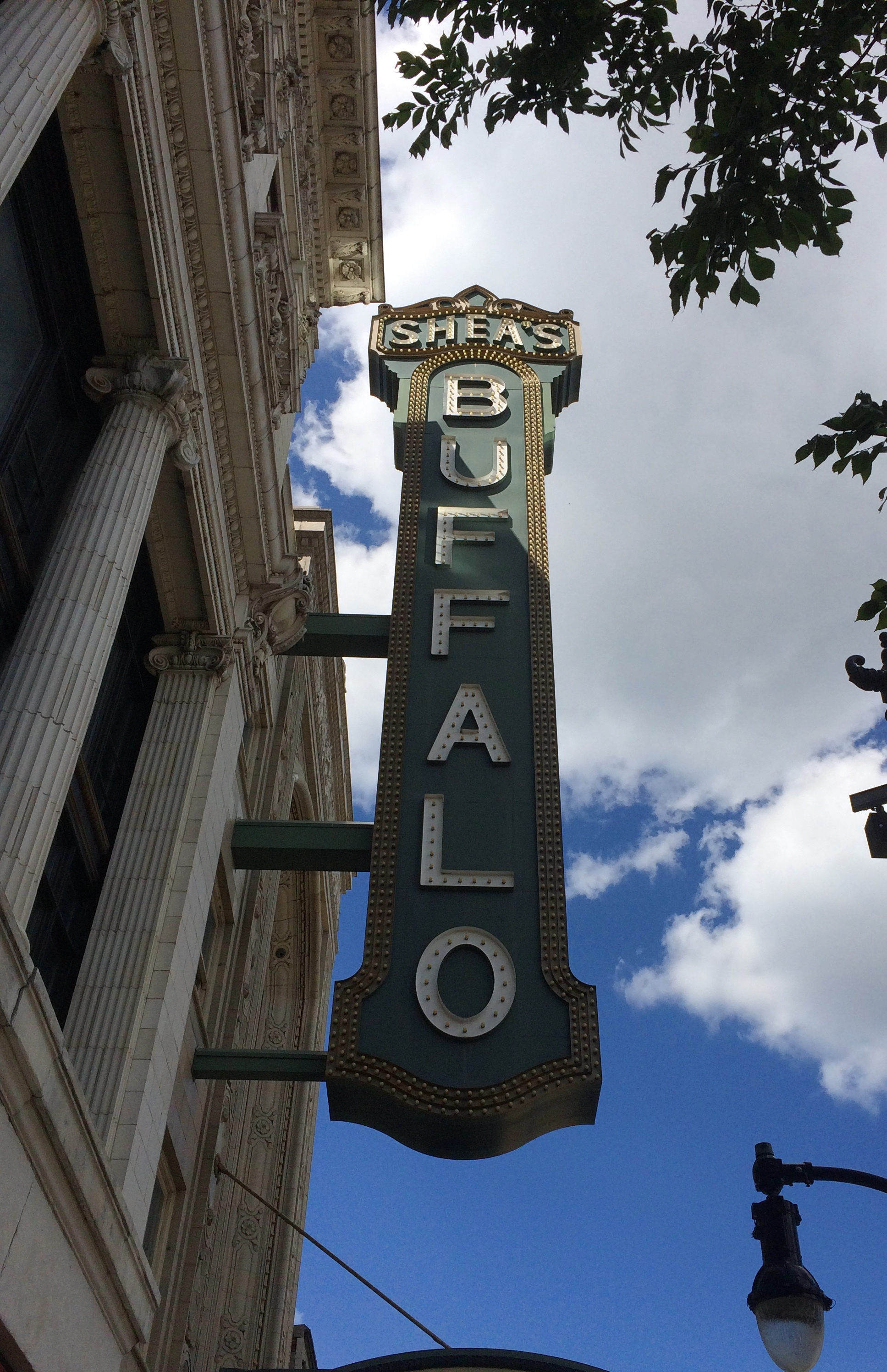At the five-way intersection of Main, Edward, Pearl and Goodell streets in Buffalo — only Main has the same name on both sides — stand the Catholic Center and the Sidway Building (mentioned yesterday) but also St. Louis Roman Catholic Church.

Designed by Schickel and Ditmar in 1889 on the site of the two earlier churches, it’s considered the Mother Church of the Diocese of Buffalo. Local architectural firm HLL, who did some restoration work in 2003, notes that “the 245-foot-tall steeple includes a 72-foot-tall, pierced spire, reportedly the tallest open-work spire ever built completely of stone without reinforcement. It is reputed to be the only remaining pierced spire in the United States.”
I popped in for a look, surprised to find it open on Sunday afternoon. A wedding was in progress, but I was able to see much of the interior from the narthex, through large windows in the doors.

A descriptive stone outside the church.

Main Street continues southward, but not as New York State Route 5, which veers off onto Edward St. and heads into downtown via another street. Main becomes narrower at that point, includes tracks for Buffalo’s light rail system, and runs through Buffalo’s Theater District, which I expect hasn’t been too busy lately. By that I mean in 2020, but also since its heyday about 100 years ago, when it was home to about 50 theaters of various sorts. I didn’t count, but maybe there are seven or eight.
Still, even former or diminished theater districts have their interests. Dotonbori in Osaka, for instance, only has a single theater any more (for Kabuki), but it sure is interesting to walk through.
The grande dame of Buffalo theaters is Shea’s Buffalo, these days one of a complex of three theaters known as Shea’s Performing Arts Center.
It’s one of the many Rapp and Rapp theaters that started as a movie palace in the 1920s, like the Chicago Theatre. If it had been open, I would have gone in.

“A casual observer may not know the history behind Shea’s. Michael Shea, for whom the venue is named, was born in St. Catharines, Ontario, in 1859,” Buffalo Tales reports. “Around the turn of the century, he operated several vaudeville theaters in Buffalo and Toronto. By the early 1920s, Shea and his associates had traveled the country to gather ideas for constructing an ornate theater in Buffalo.
“Cornelius and George Rapp, famous theater architects based in Chicago, were hired to design a building that would resemble a European opera house and ‘compare favorably with such buildings in other cities.’ The initial plan was to spend approximately $1 million, but investors eventually spent twice that.”
A little further south and across the street is another splendid bit of Beaux Arts, the Market Arcade.
“Designed in 1892 by Buffalo architects Edward B. Green and William S. Wicks, the Market Arcade is the city’s only historic covered shopping arcade,” the site Buffalo As An Architectural Museum says. “This nineteenth century building type, which first achieved popularity during the 1820s, is generally regarded as the forerunner of the contemporary suburban mall.
“The Market Arcade recalls more famous arcades, such as the Gallery Umberto I (1887-90) in Naples and London’s Burlington Arcade (1818-19), which G.B. Marshall, the builder of the Buffalo Arcade, suggested to the architects as a model for his structure.
“Like European arcades, the Market Arcade maintained close ties to the street life around it. When constructed, the building connected this bustling stretch of Main Street with the flourishing public market that formerly existed at Washington and Chippewa streets. It was the market — the ‘belly of Buffalo’ – that gave the arcade its name.”
These days, the restored Market Arcade is home to CEPA Gallery and a mix of retail shops. The building was closed when I wandered by.
Further south still, the theater district peters out, giving way to a more general commercial area. I was a little tired by this point, but I had to get a closer look at the gold-domed building on Main, which I’d seen from a distance earlier in the day from the lawn of the Buffalo and Erie County Public Library, and which I’d imagined might be a church.
Turns out it’s a temple of mammon instead, a branch of M&T Bank that used to be Buffalo Savings Bank. That institution was founded in the 19th century by prominent Buffalonians, including local attorney and politico Millard Fillmore.

“Few buildings on Buffalo’s skyline are as pronounced or recognizable as the historic Gold Dome building,” USA Today reported in 2014. “Designed by E.B. Green [him again], the granite landmark was commissioned in 1898 and opened in 1901 — just before the Pan Am Exposition. But back then, this ornate edifice was actually rather plain.”
The article details the artwork added in the 1920s to the interior — inaccessible on a Sunday — and then says about the outside of the dome: “When it was built, the tiles were a simple beige terra-cotta. They stayed that way until the ’50s when they were gilded with 23 and 3/4 karat gold leaf.”
A bank building with a gold leaf dome. Now that’s something you’d think there would have been more of, at least adorning banks of the pre-FDIC period. A good-looking way to send a simple message: We’ve got the dough.